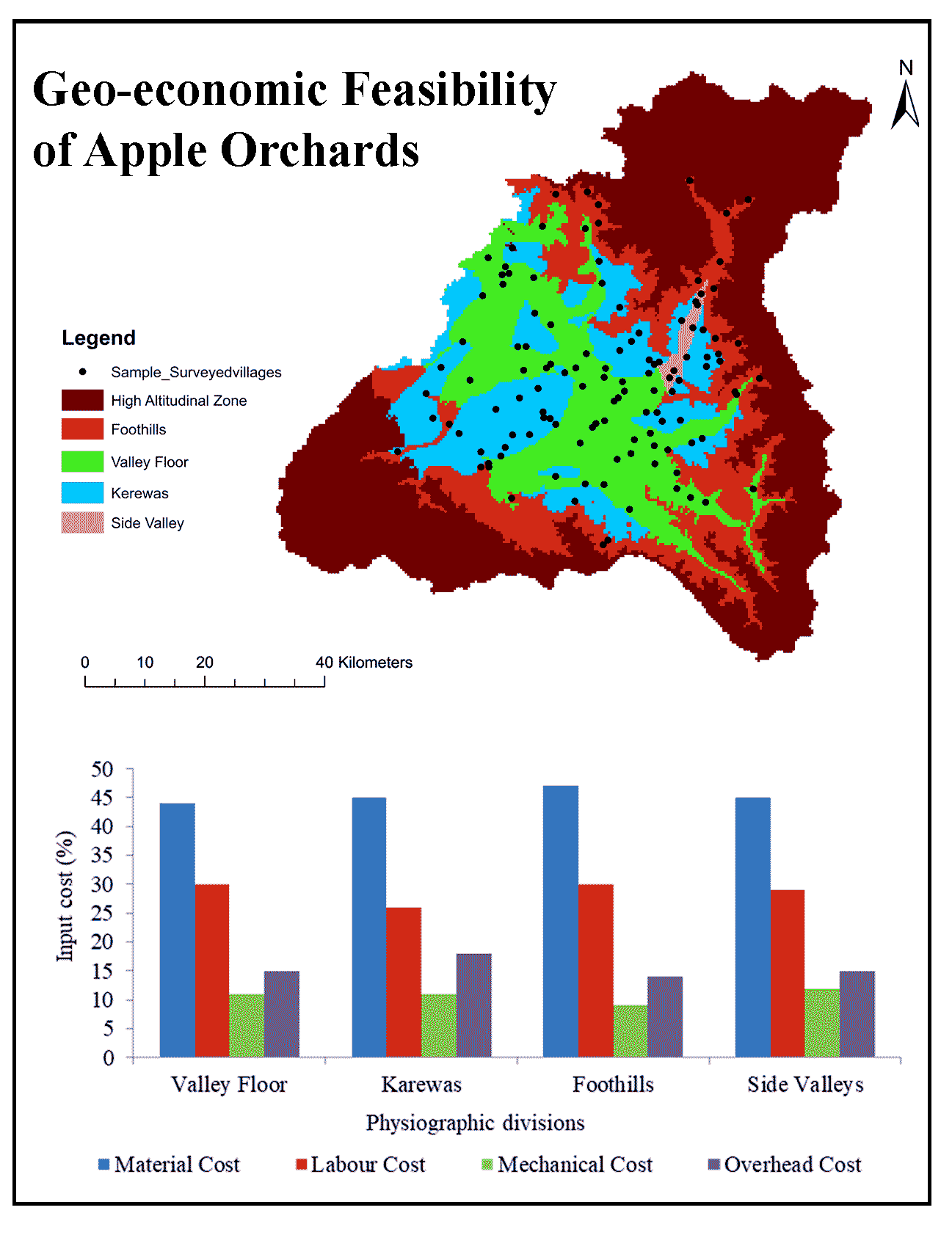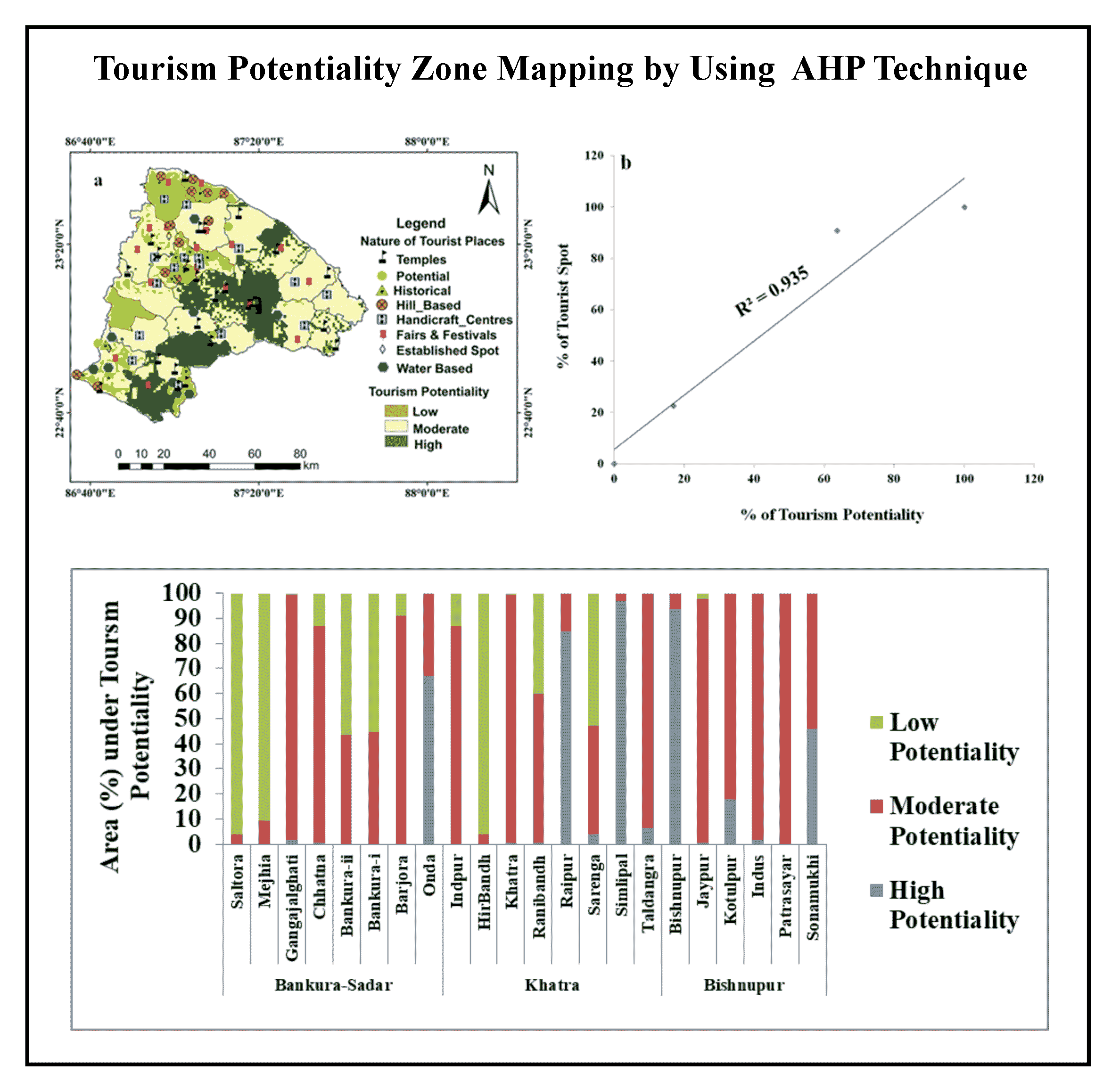Article Title :
Geo-economic Feasibility of Apple Orchards Across Physiographic Divisions in Kashmir Valley, India 
6 (2022)
40-48
Profit , Physiography , Karewas , investments , Apple


Financial investments in apple cultivation in Kashmir valley are increasingly recognized as key drivers of economic growth and employment creation. This paper presents a comprehensive economic analysis across physiographic divisions using precise economic indices that include cost-benefit analysis, project evaluation method and other socio-economic determinants. It relies on a primary survey of 866 farm-households selected across four physiographic divisions of the Kashmir valley viz- valley floor, karewas, foothills and side valleys. Results reveal that the karewas fetch the highest returns from an investment owing to its ideal geographical conditions. On contrary, the non-karewas belt was found to be trailing in one or more economic indices although the financial feasibility of investment in apple cultivation was still found satisfactory. The study affirms that agricultural land-use decisions at the micro-scale should be determined by the site-specific attributes and that economic indices are largely dictated by physical characteristics of land itself. While demonstrating the utility of land-use decisions in light of geographical factors, our results can assist both farmers and policy-makers to design a more adapted land use strategy for fostering financial investments in apple cultivation in the valley.

The present study focussed on analysis of economic feasibility of apple cultivation in different physiographic divisions.
The study is based on primary survey conducted in all physiographic divisions.
Better economic returns estimated for Karawas division.
The study facilitates for area-specific strategy development with wider recognition of different altitudes.
Barlowe, R., 1978. Land resource economics: The economics of real estate. 3rd Edition, Prentice-Hall, United states.
Bhat, M. M. and Shah, A. R., 2011. Agricultural land use and cropping pattern in Jammu and Kashmir. Research journal of agricultural sciences. 2(3), 710-712.
Bhatt, D. K., 1975. On the Quaternary geology of the Kashmir Valley with special reference to stratigraphy and sedimentation. Geol. Surv. India Misc. Publ, 24(1), 188-203.
Çiçek, A., Akçay, Y., Sayili, M. and Uzunöz, M., 1999. A comparative economic analysis between walnut and its alternative crops in the region (a case study of Niksar-Tokat-Turkey). IV International Walnut Symposium 544, 605-616.
Dent, D and Yong, A., 1981. Soil survey and land evaluation: Allen and Unwin, London, England, 278.
Easterbrook, D. J., 1999. Surface Processes and Landforms (Second Ed.). Upper Saddle River, New Jersey, Prentice Hall, 530.
Erkus, A. and Rehber, E., 1998. Proje Hazirlama Teknigi; Ankara Üniversitesi Ziraat Fakültesi Yayinlari No: 1496, Ders Kitabi: 451, IV. Baski, Ankara.
FAO [Food and Agriculture Organization], 1995. Guidelines for the design of agricultural investment projects. Investment Centre Technical Paper No. 7. Rome: Food and Agriculture Organization of the United Nations.
FAO [Food and Agriculture Organization], 1976. A framework for land evaluation: Soils Bulletin 32, Food and Agriculture Organization of the United Nations, Rome, Italy.
FAO [Food and Agriculture Organization], 1983. Guidelines: Land evaluation for rainfed agriculture: Soils Bulletin 52, Food and Agriculture Organization of the United Nations, Rome, Italy: 233.
Ganaie, S. A. S. and Bhat, M., 2016. Dynamics of cropping land use pattern and status of food scenario in Jammu and Kashmir-a Spatio-Temporal analysis (Doctoral dissertation).
Ganaie, S. A., Bhat, M. S. and Parry, J. A., 2014. Spatial analysis of cropping land use dynamics in Jammu and Kashmir- A district level study. International Journal of Recent Scientific Research, 5(3), 625-631.
Ganaie, S. A., Bhat, M. S. and Parry, J. A., 2014. Spatial variations in the levels of agricultural and socioeconomic development in Jammu and Kashmir- A district level analysis. Agricultural Economics Research Review, 27(1), 119-126.
Ganaie, S. A., Parry, M. J. A. and Bhat, M. S., 2017. Cropping land use shift and food deficit- A disaster in making in Jammu and Kashmir, India. AGU International Journal of Professional Studies and Research (AGUIJPSR), 5, 134-144.
Juanico, M., B. and Agno, L, N., 1987. Physical Geography. Goodwill Trading Co., Inc. 113.
Khan, A. R., 2007. Geography of Jammu and Kashmir. Gulshan Books, Srinagar- 190001, Kashmir.
Kumar, K. A., Thayalan, S., Reddy, R. S., Lalitha, M., Kalaiselvi, B., Parvathy, S. and Mishra, B. B., 2020. Geology and Geomorphology. The Soils of India, 57-79. Springer, Cham.
Raza, M., Mohammad, Ali. and Ahmad, A., 1978. The Valley Of Kashmir- A Geographical Interpretation. The Land. Vikas Publication, New Delhi.
Robinson, T., Steve H., Mario, M., Alison, D. and Leo D., 2013. A vision for apple orchard systems of the future. New York Fruit Quarterly, 21(3), 2013.
Romshoo, S. A., Rashid, I., Altaf, S. and Dar, G. H., 2020. Jammu and Kashmir State: An overview. Biodiversity of the Himalaya: Jammu and Kashmir State, 129-166.
Selvavinayagam, K., 1991. Financial Analysis in Agricultural Project Preparation. FAO investment centre, technical paper 8. Food and agriculture organization of the United Nations Rome, 1991.
Singh, R. L., 1971. India: A regional geography. National geographical society of India, Varanasi, 347-389.
Sojkova, Z. and Adamickova, I., 2011. Evaluation of economic efficiency of the orchards investment project with respect to the risk. Agric. Econ. 57, 600-608.
Tauer, L., 2002. Investment Analysis in Agriculture: SP 2000-03, Department of Agriculture, Resource and Managerial Economics, Cornell University, Ithaca, New York, 14853-7801.






